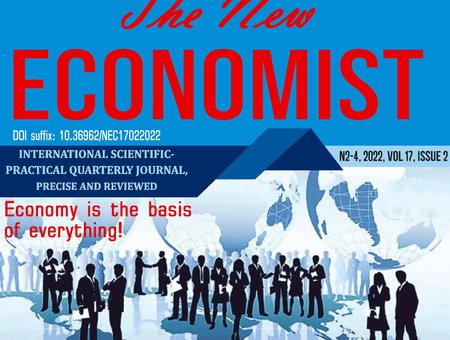DOI suffix: 10.36962/NEC17022022-59
Motivation to work is an objective phenomenon. When the work to be done is in the employee's interest, he does his best to do it. This interest can be tangible, intangible, or both.
Scientists have always studied the problem of motivation. Over the years, they have developed many theories. They are: A. Maslow's theory of hierarchy of needs, K. Alderfer theory, D. McClelland's theory, F. Gertzberg's two-factor’s theory, Porter-Lawler's theory and others. There are also modern theories of motivation - the theory of three demands, the theory of goal setting, the theory of justice and others. None of the current theories of motivation are universal, i.e. those that could be implemented in companies to increase employee’s motivation.
Studies conducted in the USA have shown that 73% of employees work in a "sleeping" state. This means that at the place of employment they do not have the proper motivation to work with all their efforts. The number of people who work enthusiastically is few. Their motivation is the work itself. The rest of the people need a material motive, and not the same, but different, because their social situation and psychological type are different as well.
The motivation of workers, in contrast to less developed countries, is always higher in highly developed countries, because there people have to fight for self-sufficiency. And the majority of workers in poor countries, while his/her and their families survival from starvation is in a question, it does not have the luxury of taking care to know and recognize his cosmic destiny. This is the reality of poor countries. One such underdeveloped and poor country is Georgia, as well as its employed population.
Motivation, whether it is moral or material, gives a person the perseverance to pursue a goal. It is the motivating and directing reason for human behavior [5. p. 16]. Through it, a person's efforts to achieve a goal are more energetic, purposeful and unwavering [6. p. 379-380]. To put it more simply, the efforts of motivated people at work contain three important elements: human energy, direction and strength [7. p. 28-29]. The motive should be selected by the manager in such a way that he can develop all these three elements in the employee. The first element expresses the intensive work of the employee, the second element - correctly directed work, and the third, not once, but continuously, solid work [8. p. 607].
In order to strengthen the motivation of employees, Georgian scientists give the following advice to managers:
- Choose a hardship pay strategy;
- Give employees freedom and independence in performing tasks;
- Let them participate in management decisions;
- Make them feel respected from your side;
- Plan the work task according to their habits, character and abilities and more.
As can be seen from this list of tips, Georgian scientists advise managers to be able to choose the right motivator for each employee. They should have a partnership and almost friendly attitude with the employees. In our opinion, to do this, managers should first divide the collective into 4 groups:
The first group: employees who are characterized by an insatiable desire for success in their work.
The second group: employees who need success in their work to be rewarded appropriately.
The third group: employees who are constantly satisfied with the reward they receive for their work.
The Fourth group: employees for whom there is no strong or weak motivator. They are constantly dissatisfied.
In order for the company to achieve its goal, interest and desire through employees, it should be based on the employee's interest. Without this, the company won’t be able to receive proper compensation from the employees. For this purpose, the company should systematically study the interests of the employees, as these interests are changing over the time.



